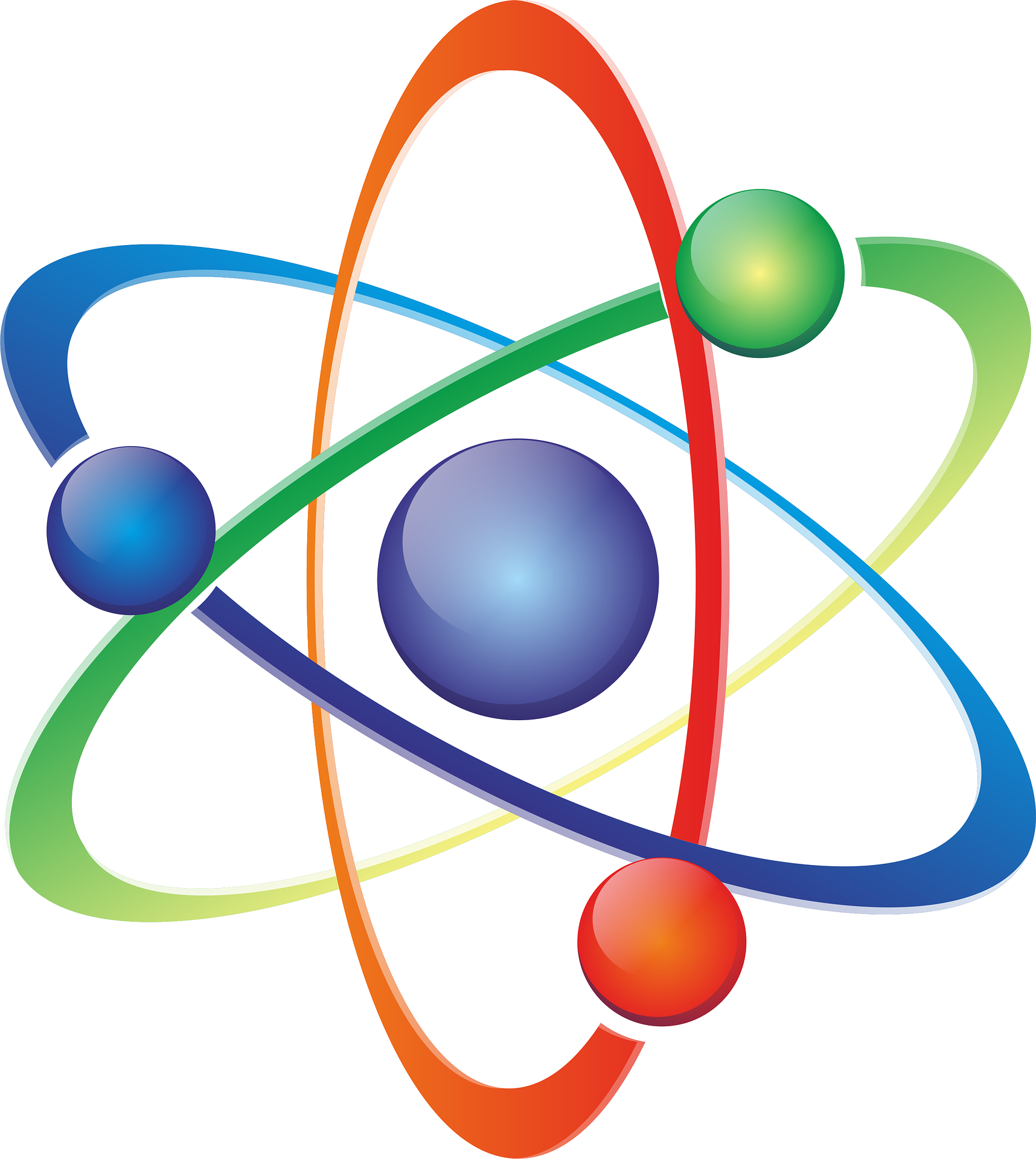This activity compliments the teacher’s lesson on the atom. In the basic version, students learn about the atom, its structure, the particles. They will also learn how to calculate the atomic mass and find the number of protons, neutrons, and electrons. In the advanced version, students learn about isotopes and ions.
Materials:
Three sets of signs: red with a plus (protons), yellow (neutron), and blue with a minus (electron). Periodic tables for students to reference later on in the activity.
Helpful visual aid: Bohr’s Model of the atom
Assignment:
BASICS
Demonstration: The teacher calls on 6 volunteers to the front of the classroom and hands a “proton” to 2 students, a “neutron” to 2 students, and 2 “electrons” to the last student. The “protons” and “neutrons” stand together, while the “electrons” “orbit” around them.
***Students will be forming a helium atom
Explanation: ATOMS are the basic building blocks of matter. They make up everything around you–including air! There are three basic parts of an atom: the PROTON, which has a positive charge; the NEUTRON, which as no charge and is neutral; and the ELECTRON, which has a negative charge.
***Helpful visual aid: Bohr’s Model of the atom
Practice: The teacher calls on students to point to which volunteers are the proton, neutron, and electron particles. The students explain why they know which volunteer is which particle.
Explanation: The protons and neutrons make up the nucleus, which is the core of the atom. The electrons orbit around the nucleus in electron shells. In general, there are the same number of protons and electrons in an atom. We can tell what element the atom is by counting the number of protons in the nucleus. How many protons are in our atom? The volunteers formed the helium atom, which normally has 2 protons, 2 neutrons, and 2 electrons.
Demonstration: The teacher shows the students how to use the periodic table.
The ATOMIC NUMBER is the number of protons there are in the atom.
The ELEMENT SYMBOL is the element’s shorthand or abbreviation
The ATOMIC WEIGHT/ATOMIC MASS is the average mass of an element. You can find it by adding the protons and neutrons together. The unit of measurement is the ATOMIC MASS UNIT, or AMU.
PUTTING IT ALL TOGETHER
Activity 1: The teacher calls on 4 volunteers to pick up 4 proton signs. What is this element? What are the atomic number, atomic mass, and element symbol? How many neutrons and electrons should there be? The teacher can call on more volunteers to pick up neutron and electron signs, and the volunteers must form the Beryllium atom.
***Element: Beryllium
***Atomic Number: 4
***Atomic Mass: ~9 amu
***Element Symbol: Be
***Hint: To find the number of neutrons, students must subtract the atomic number from the atomic mass (9amu – 4protons = 5neutrons)
***Number of Electrons: 4
The teacher can follow this activity with other elements, too. This activity can also be done without calling volunteers to the front. The teacher calls the atomic number, and students answer the same question. Eg, “This element has 92 protons. What is this element? What are the atomic number, atomic mass, and element symbol? How many neutrons and electrons should there be?”
Activity 2: The teacher names an element, and the students must answer how many protons, neutrons, and electrons there are. Volunteers go to the front of the classroom and form the element’s atom. Students can answer additional questions about the atomic number, atomic mass, and element symbol. This activity can also be done without volunteers. Eg, “What can you tell me about the element uranium?”
ADVANCED VERSION
Explanation: Different versions of the same element can exist. For example, there is U-235 and U-238. U-235 is uranium with an atomic mass of 235 amu and U-238 is uranium with an atomic mass of 238 amu.
Activity: Have the students look on the periodic table and find the atomic mass of uranium. What would change the mass of an atom?
Explanation: Atoms that have the same atomic number (same number of protons) but have a different number of neutrons are called ISOTOPES. Isotopes also have different atomic masses because of the neutrons. For example, U-235 has 143 neutrons, and U-238 has 146 neutrons.
Activity 3: The teacher calls on volunteers to form a hydrogen atom. Students answer questions about the atomic number and atomic mass. Then, the teacher adds a “neutron” to form deuterium. Students answer questions about the atomic number, number of neutrons, and atomic mass. The teacher can add one more “neutron” to form tritium. [Good segue into radiation]
***Remember: a hydrogen atom does NOT have a neutron
***Deuterium: 1 proton, 1 neutron, and ~ 2 amu
***Tritium: 1 proton, 2 neutrons, and about ~3 amu
Explanation: Atoms can also have “positive” and “negative” charges, and atoms with a positive or negative charge are called “IONS.”
Activity 4: The teacher calls on volunteers to form a neutrally charged lithium atom (3 protons, 3 electrons, and 4 neutrons). The teacher can call on a volunteer to add an electron to form a CATION (a negatively charged atom) or take away an electron to form an ANION (a positively charged atom).





